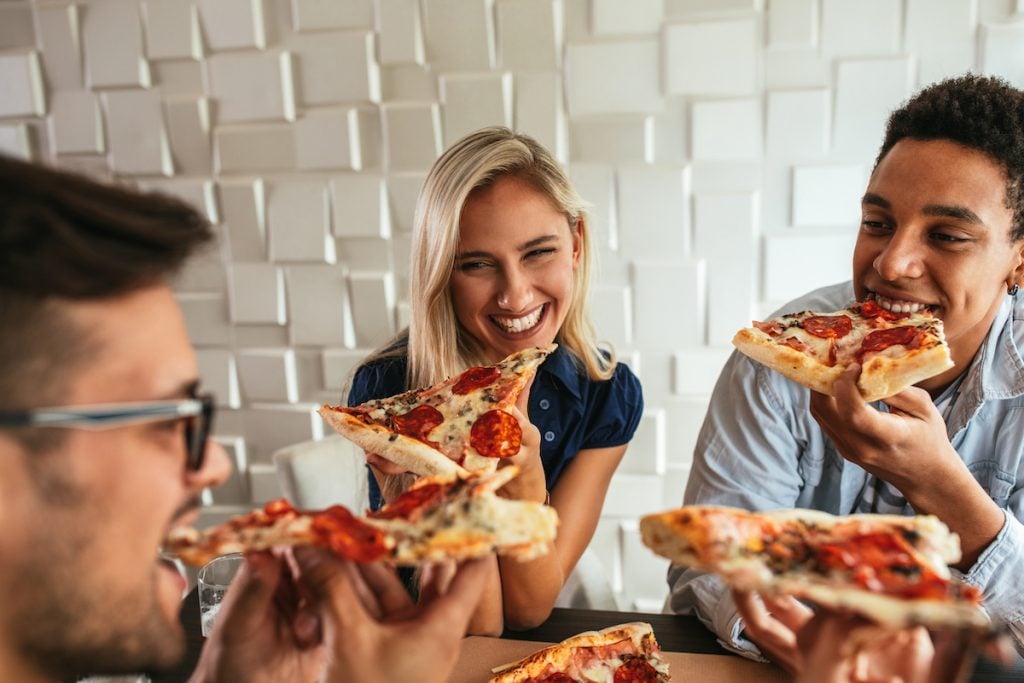As humans, we all crave the finer things in life. That’s just how we’re set up. There’s a little hedonist inside all of us. And that encompasses all things really – the need to be loved and cared for, the desire for physical touch, the common want for more money and fancier things in life, and believe it or not, the obsession with food also stems from that hedonistic nature. And we want all those things because they bring us pleasure.
Food has always been essential to humans, but it’s in the last 50 or so years that we’re seeing the food industry changing and evolving and trying to cater not only to our needs but also to our hedonistic desire for pleasure. Today we thought we’d dive deeper into the science of pleasure that we get from food and how our brains process it.
Hunger – Satiation
This is one of the most basic ways our brain receives pleasure from food. You feel hungry, you want food, and then you get it. Just the process of getting something you want is enough to bring pleasure on a very basic level.

Satiety – Pleasure
Just to clarify, satiation is something that we feel in the process of eating. But satiety comes after we’ve stopped eating. It’s that feeling that prevents us from eating non-stop. It’s the feeling of fullness. Seeking out food and achieving satiety has been an evolutionary need for us since the dawn of time. So by feeding our body to survive we’re also satisfying our instincts and that also brings us pleasure.

Sight Plays A Role
First of all, it’s important to establish that pleasure from food is received not just through taste, it actually involves all of our senses. And the reason why we receive pleasure from food isn’t just as simple as satisfying our hunger. We process food with every sense. We also learn pretty quickly, so we associate tasty-looking things with actually being tasty. There’s a reason you start salivating when you see a tasty treat even before you’ve had the chance to taste it. Sight is important when it comes to food, it also brings us pleasure. Must be the reason food blogging is so huge and why fast food restaurants have pictures of food on the menu.

Smell Is The Most Important
Smell plays a key role when it comes to receiving pleasure from food. Smell helps us determine what something will taste like more complexly than sight ever could. We have learned what sweet and savory meals taste like, what spicy smells like, and what fresh foods smell like. So when you smell food and imagine what it would taste like and then actually confirm it when you eat it – your brain perceives that as pleasure too, because you’ve satisfied that curiosity.

Taste and Texture
Turns out taste and texture don’t always go hand in hand. For example, you might like the taste of oats, but the texture is really boring to you, so you prefer to blend them up and bake them like the kids on TikTok. That’s your brain trying to maximize the pleasure from food. You could eat it as is, but our brains seek pleasure, so you’re saving recipes and adding bits and pieces to achieve that satisfying texture.

Your Digestive System Plays a Massive Role
You see, our bodies are very complex and our brains are even more complex than that. Let’s talk about the processes that precede that feeling of hunger that we’re all familiar with. You think you just become hungry, but who sends that signal? Is it our brain that determines that it’s time to eat and what to eat exactly? A lot of the time it’s your digestive system that signals your hunger. Your stomach and intestines sense that the food has been digested and sends a signal that it wants more.

We Crave Nutrient Dense Foods
There’s a reason people love fast food more than they love salads (even though sometimes we do crave a good salad). From the evolutionary perspective, as hunters and gatherers, procuring food was difficult at times, so it was in our best interest to eat something that will satisfy us and keep us full for longer. That’s what gave us the most pleasure. The only problem we have now is that we no longer face that problem of procuring food, it’s everywhere, so we just go for the fastest route to achieving pleasure, and in the case of fast food – it’s not the best for us.

Learned Behaviors
Since our brain is essentially a pleasure-seeking machine we quickly learn how to get that pleasure from food fast. So once you learn that burgers and chocolates bring pleasure it’s really hard to convince yourself not to eat them all the time. Because realistically they are more satisfying than a piece of fruit or a salad. The way our brain perceives pleasure has nothing to do with how healthy that food is. It just wants pleasure and satisfaction.
The food industry, in general, is putting a lot of money into finding out how to lure in more customers, how to satisfy those pleasure-seeking brains of ours, and how to make the food so enticing you have no choice but to indulge. But there’s also the other side of the coin. Learning more about the complicated relationship between food and pleasure can also be the key to making food that still brings us that pleasure we all crave without contributing to the obesity problem in the world.

